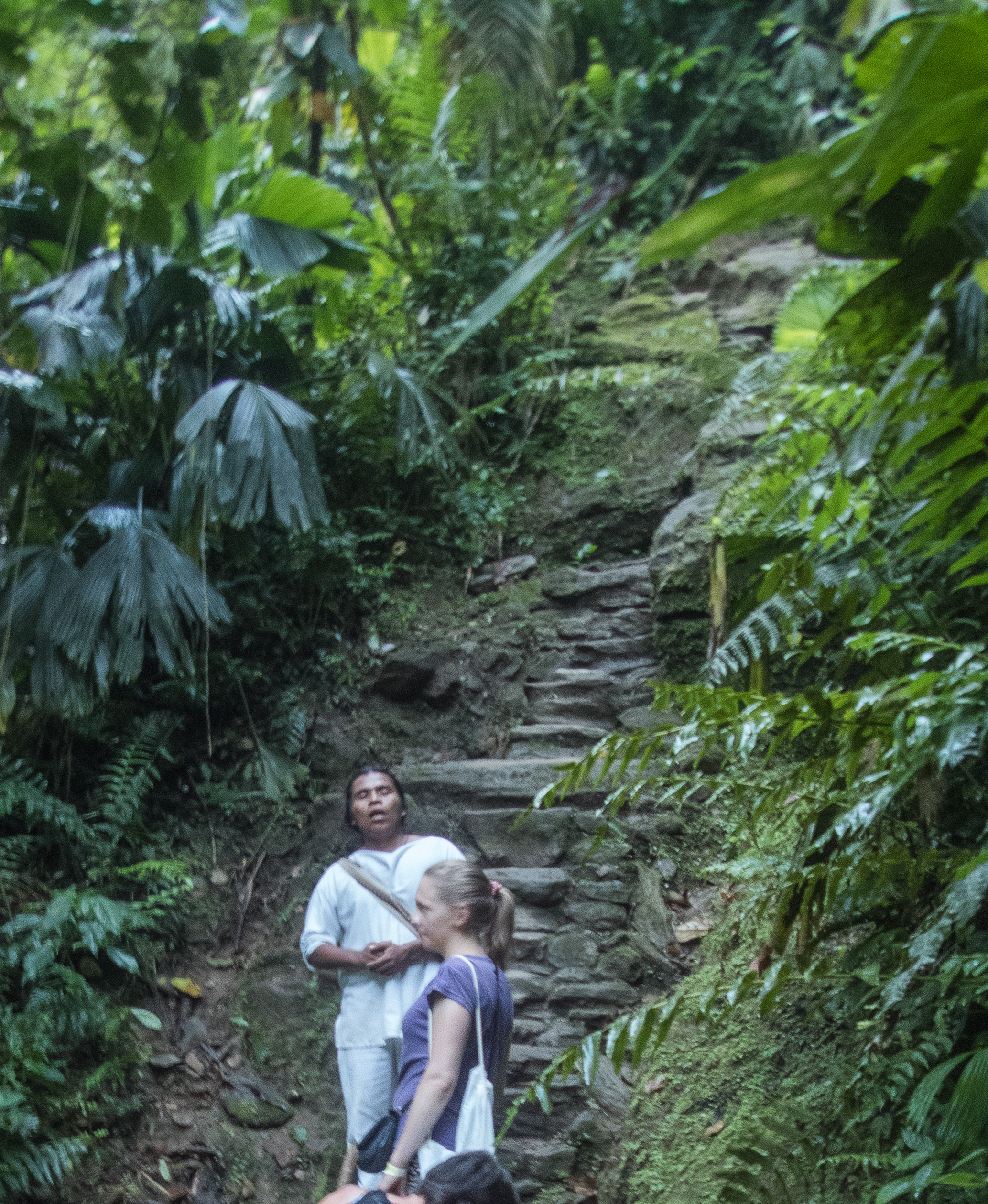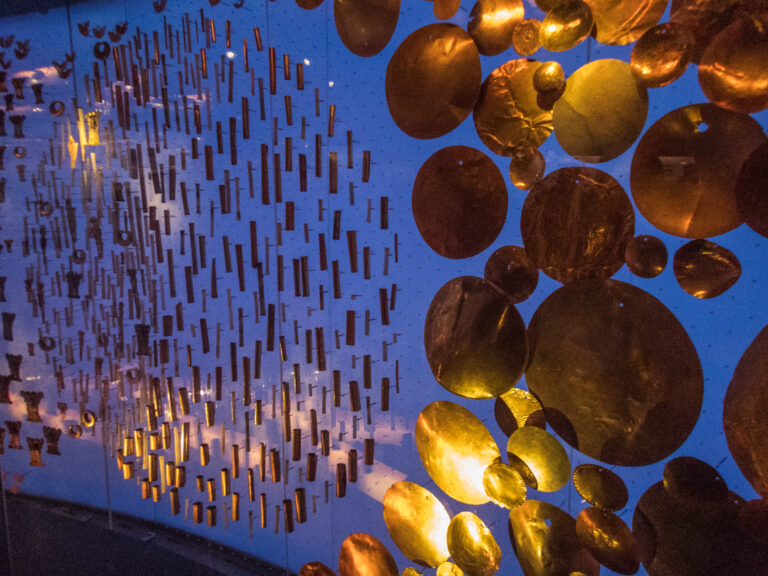Journey to The Lost City
The History of The Lost City
The Lost City – La Cuidad Perdida – it’s name alone conjures up all the mystery that motivates a traveller. It is a tough journey and well worth it.
The Tairona people occupied Northern Colombia between 200 CE and 1600 CE. They founded The Lost City, known locally as Teyuna, in the mountains of The Sierra Nevada de Santa Marta around 800 CE. At its height, Teyuna was home to up to 8000 people.
The Tairona finally abandoned Teyuna in the 17th century after fighting against the Spanish invaders for seventy-five years. The Lost City was claimed by the jungle, but the decedents of the Tairona maintained their spiritual contact with the site. Today, those descendants make up the Arhuaco, Kankuamo, Kogi, and Wiwa tribes. It was with the Wiwa people that I visited the site in 2017.
Finding The Lost City
In 1972, treasure hunters arrived at the base of the gruelling 1200-step climb to Teyuna. Some of the treasure they took from the city soon arrived in the hands of local archaeologists. The looters were persuaded to take the archaeologists to the site. Work on The Lost City began soon after and the main reconstruction was completed in 1982.
Reaching The Lost City
You can only access The Lost City with a registered guide. I met with the group I would be travelling with at the Wiwa Tour office in Santa Marta. We piled into a strong 1980s Toyota Land cruiser, and two-and-half hours later we reached our start point at Machete Pelao. Our Wiwa guide was very calm and helpful throughout the trip, and shared many wonderful stories and insights into his culture.
The Journey
The journey started with open mountain farmland interspersed with areas of intact forest. There were vultures, hawks, warblers, and butterflies that joined us on the start of our trek.

The start of the trail was on dry mud roads and trenches with passing motorbikes and mules. We crossed suspension bridges and passed through a few hamlets on the way.

With access to the route and the site for The Lost City tightly controlled, trekkers stay in the same limited accommodation. Casa Alfredo’s was our first stay. It was clean with four showers, four toilets, and a wet area. There were probably about fifty people staying there, so not too overloaded. The real delight was the sunrise view:



We started the second day of trekking at about 0630. After three hours, we stopped at the Wiwa camp for lunch. Mules entered into the middle of the site and chickens roamed everywhere.

The five-hour trek in the afternoon was along mud trenches through fairly closed rainforest. In parts, the mud had turned into a slurry especially on the steeper climbs and slopes. An eight-hour trekking day is beyond me. I started the third day exhausted!
That night we were packed in with 200 other people, and we slept like sardines in a row of hammocks. Thanks to the trekking, I slept like a log!
The Lost City – The Main Site
Day three and we arrived at the site of The Lost City! We set off at 05:00 to beat the crowd. A morning of hiking and river crossings, and we finally arrived at the steps leading to Teyuna at 12:00. The first 300 or so steps were treacherously narrow and slippery. Rather like a cat, I find going up easy, but coming down is difficult!

On arrival at the lower site, we performed a Wiwa rite to ask permission to enter Teyuna. This included holding hands around a stone outlay circular platform and making a natural offering, such as leaves.

We headed up to the large double platforms where the men’s and women’s meeting houses would have been. The surrounding views of the forest, mountains and waterfalls are extraordinary!




A Slow Return to Santa Marta
The trek down was gruelling and I my knee was beginning to swell. I got caught in a heavy storm for the last fifteen minutes before reaching camp. The narrow trench turned into a stream of red brown muddy water mixed with mule excrement which, in parts, I had to haul myself through. Not surprisingly, I ended up with a very poorly stomach. Margarita, our cook for the journey, plied me with herbal tea and medicinal food.
I woke up weak and unwell, but thankful that we had completed the toughest part of the trek. Today, there was only three hours trekking. Topped up with Imodium to stop any diarrhoea, I took it step by step.
The final day, and still with diarrhoea, I trekked the short distance to the point where I could take a motorcycle to Machete Pelao. The bike ride was fun, crazy, and gave a very different perspective on the surrounding countryside. It was easier to see it in its entirety as I wasn’t having to watch my step. Soon after lunch, we drove slowly off the foot hills and back to Santa Marta.





